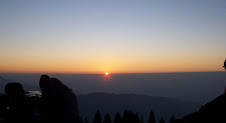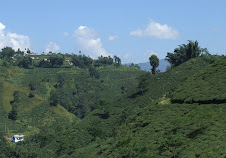Saturday, 14 March 2009
Monday, 2 March 2009
Monday, 29 September 2008
The Hitis of Patan

Introduction
In Patan, the traditional water supply system through the hiti is centuries old and still functions today, meeting a large pe rcentage of the residents' water needs. The water is channeled from a distance of 12km from the town and transferred through an intricate system of open canals and covered aqueducts to the many spouts that are distributed throughout the town. This constitutes a vital source of water in a place where the water supply system is inadequate. Through the hiti, thousands of people have access to clean water for their household and small agricultural needs.
A brief history
The Malla rulers of the 13-15 th Centuries commissioned an intricate canal network known as the ‘Raj Kulo' to transfer water from Lele, 13km away from Patan, to fill their royal baths. As the population grew, an elaborate underground water distribution network was built to transfer and supply water to the various spouts in the city. This network remained a vital part of the water supply system until the 1970s, providing a constant source of supply to the many water spouts in Patan.
Degradation and loss
As the city grew, new houses developed and road network expanded, developers paid no attention to the canals beneath and some water spouts were buried beneath construction projects that were considered more important and modern to a ‘developing' city. With a few years many of the hitis ran dry. Experts and activists working on the issue feel this resulted from people getting used to water coming through the mains. As a result the spouts were forgotten and buried.
In Patan, the traditional water supply system through the hiti is centuries old and still functions today, meeting a large pe rcentage of the residents' water needs. The water is channeled from a distance of 12km from the town and transferred through an intricate system of open canals and covered aqueducts to the many spouts that are distributed throughout the town. This constitutes a vital source of water in a place where the water supply system is inadequate. Through the hiti, thousands of people have access to clean water for their household and small agricultural needs.
A brief history
The Malla rulers of the 13-15 th Centuries commissioned an intricate canal network known as the ‘Raj Kulo' to transfer water from Lele, 13km away from Patan, to fill their royal baths. As the population grew, an elaborate underground water distribution network was built to transfer and supply water to the various spouts in the city. This network remained a vital part of the water supply system until the 1970s, providing a constant source of supply to the many water spouts in Patan.
Degradation and loss
As the city grew, new houses developed and road network expanded, developers paid no attention to the canals beneath and some water spouts were buried beneath construction projects that were considered more important and modern to a ‘developing' city. With a few years many of the hitis ran dry. Experts and activists working on the issue feel this resulted from people getting used to water coming through the mains. As a result the spouts were forgotten and buried.
Sunday, 28 September 2008
Saturday, 27 September 2008
VANISHING OF NEPALESE CULTURE AND TRADITION
 Think about Nepal and picture of beautiful and peace loving people comes to your mind.
Think about Nepal and picture of beautiful and peace loving people comes to your mind.While walking in the streets of Nepal , one finds statues of Buddha everywhere, people worshiping, some Hindu women carrying puja thalis early morning for pray and monks in traditional dresses, beets and kamadalu . But in this media world, Nepal 's Generation Next doesn't know much about their culture and tradition. They are forgetting and changing their culture, tradition and heritage fast due to the influence of non Nepalese media.
Over the years foreign cinema and TV channels invaded Nepali market. There is no Nepal in that media. Nepal TV, the official broadcaster, runs 24X7, but most of its viewership is in rural areas and it lacks good quality.
Nepal, a small country, depends mostly on agriculture and tourism. Foreign media does not cover it.
It has also largely affected the Nepalese economy. The Nepalese advertising industry as well as consumer industry is dying because there is no promotion in the media. Nepali businessman has to depend upon others.
This invasion of foreign media has given birth to some new trends in Nepal which are not related to Nepalese culture. Such as; there was no mehendi and dance in Nepali marriages. But it is catching fast now due to TV serials. A funeral in Nepal has become party today.
It has also given rise to the moral degradation in Nepali society.
Subscribe to:
Comments (Atom)
.jpg)
.jpg)
.jpg)
.jpg)

.jpg)







































